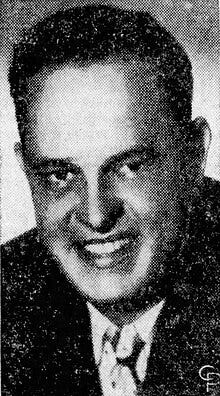Madman Muntz
History is not automatic.
We tend to assume that it is, especially when we look backwards. We tend to assume that somebody would always come along to take the latest technology and make it accessible to the average Joe.
When we look at the history of computers, for example, we tend to look at the trend setters and the companies that made the big breakthroughs. We forget about the companies that worked hard to bring at least some semblance of new technology to the average household.
And that’s where Madman Muntz comes in.
Earl Muntz was his name. He was born in 1914, and he spent his entire lifetime selling and promoting various cars and consumer electronics. And he lived up to his “Madman” nickname.
You can read all about him on his Wikipedia page. I’m mostly interested in discussing here his contribution to the television industry — something forgotten by all but the most dedicated followers of the history of the medium.
As you may or may not know, televisions weren’t all that common in early 1949. Since this is a baseball blog, we might as well talk about it from a baseball perspective.
The 1947 World Series was televised — well, it was technically televised. If you happened to live in New York City, Philadelphia, Schenectady, or Washington DC, you could watch the games live on local networks. Those markets received live feeds via coaxial cable, and anybody living close enough to pick up on the relayed feed broadcast by those stations could tune in.
The 1948 World Series was also televised, though to an even more restricted market. Games 1, 2, and 6, played in Boston, could only be seen in the northeast part of the United States. Games 3, 4, and 5 were limited to the midwest. This was the days before sattelite relays, which prevented the series from being broadcast live across the country.
And, of course, there was the small problem of the availability of television sets themselves.
That’s where Madman Muntz comes in.
Rather than allowing his new television business to be confined by the restrains of the market, Muntz challenged his engineers to make systems as cheaply as possible. And the Madman marketed these sets like crazy.
I came across his story in this Newsweek feature from June 1949:
Now, $200 was still a lot of money for a 10 inch television set in 1949. However, $200 was a lot more reasonable for the average consumer than what most of Muntz’ competitors were offering. We’re talking about a price over $100 lower than the nearest cheap brand.
Muntz achieved this by limiting the number of electronic components in television sets to the bare minimum. As his Wikipedia page puts it:
Of course, a lot of the stuff Muntz was cutting out actually did make a difference. Customers in more rural areas far away from television transmission towers would experience awful reception. Muntz deliberately targeted the urban market, figuring that he could rely on the strong strength of local television towers to make up for his cost cutting.
Did it work? Of course it worked. But it didn’t make him much money, and Muntz TV went out of business in 1959.
However, his campaign led directly to the ubiquitousness of television in United States households in the 1950s. Since television sets (admittedly of questionable quality) were affordable to the majority of households, Muntz’ efforts paved the way to the golden age of television.
And, of course, that meant the golden age of baseball.








